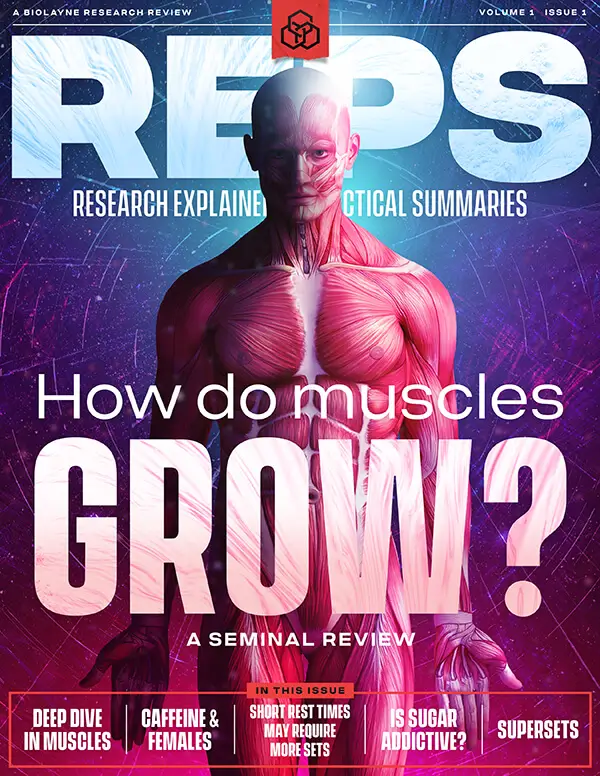Is training through a full range of motion always better? Not necessarily. A new study in young women shows that partial reps may actually lead to greater strength gains — and similar hypertrophy — compared to full-range training.
Overview
- What did they test? The researchers compared how training through different ranges of motion on a knee extension machine affects strength, muscle growth, and activation. Participants trained in one of four ROM groups: INITIALROM, FINALROM, VARROM (alternating INITIAL and FINAL), or FULLROM over 12 weeks, while a control group did not train. They measured isometric strength at three joint angles, muscle activation via EMG, torque production during training, and quadriceps muscle size using ultrasound.
- What did they find? Strength gains were specific to the joint angles trained, with the greatest increases in isometric strength occurring where torque production was highest. Training in the INITIALROM and VARROM led to significantly more muscle growth than FINALROM, and had larger effect sizes than FULLROM. Overall, the VARROM group showed the most promising combination of strength and hypertrophy benefits.
- What does it mean for you? If you’re trying to build strength at a specific joint angle, training in that exact range may be more effective than using full ROM. For muscle growth, using partial reps in the stretched position or alternating ranges might offer a slight advantage, but the benefit over full-ROM training is likely small. These strategies can be useful additions to a well-rounded program, but they should not replace full-ROM training altogether.
What’s the Problem?
Full range of motion (ROM) training is commonly recommended to maximize muscle growth and strength, and in many cases, it delivers solid results. However, research has shown that strength gains are highly specific to the joint angles used during training, and partial ROM training—particularly in the stretched position—can produce comparable hypertrophy and even greater strength at specific angles 1 2 3 4. Despite this, most studies have focused on men and used single measurement sites, limiting our understanding of how ROM affects whole-muscle growth or joint-specific strength in women, who remain underrepresented in resistance training research.
Moreover, much of the existing research has relied on dynamic strength outcomes like one-rep max tests, which only reflect the ability to produce force through a specific movement pattern. Few studies have examined how different ROMs influence isometric strength across multiple angles or explored neural adaptations like muscle activation 5. This leaves open questions about how partial ROM training actually drives strength or hypertrophy on a physiological level. More detailed assessments, including electromyography (EMG) and torque-angle relationships, are needed to understand the underlying mechanisms and practical implications of manipulating ROM during training.
Purpose
The purpose of this study was to examine how different knee extension ROM training protocols affect muscle hypertrophy, isometric strength at various joint angles, muscle activation, and torque-angle relationships in young women.
Hypothesis
The researchers did not provide a specific hypothesis.








